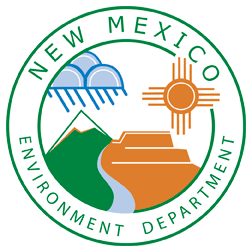La modelización de la calidad del aire es una simulación matemática que muestra cómo los contaminantes del aire se mueven e interactúan en la atmósfera y afectan a la calidad del aire. El Departamento de Medio Ambiente realiza y orienta a la comunidad regulada sobre la modelización del aire para comprobar el cumplimiento de las normas de calidad del aire.
Con algunas solicitudes de permisos de calidad del aire debe presentarse un análisis de modelización de la dispersión del aire. La Oficina de Calidad del Aire de Nuevo México ha elaborado unas directrices para ayudar al modelador de dispersión a desarrollar un análisis aceptable y para facilitar al personal de la Oficina la agilización del proceso de revisión.
A continuación encontrará orientaciones e información sobre modelización.
- Directrices para la elaboración de modelos 2024 (julio de 2024) describen los requisitos y normas para la presentación de modelos de dispersión atmosférica. (Se actualizó la norma anual de PM2,5 a 9 μg/m3 y se corrigió el orden de los parámetros de agotamiento del manejo del cemento en la Tabla 28 en 2024).
- Región de control de la calidad del aire (AQCR) La descripción y el mapa de la AQCR describen el uso de los incrementos de la PSD en Nuevo México.
- El mapa de la zona de clase I muestra las zonas que gozan de una protección especial de la calidad del aire en virtud de la Ley Federal de Aire Limpio.
- Los datos de elevación para la entrada del modelo pueden obtenerse del USGS.
- La recuperación de fuentes MergeMaster es una página web que recupera fuentes circundantes e información sobre su ubicación. (Labase de datos MergeMaster es una base de datos MS Access alternativa a la recuperación web).
- Los archivos meteorológicos listos para su uso en AERMOD son preparados por la AQB para determinados lugares.
- La plantilla del protocolo de modelización para fuentes fugitivas puede utilizarse como ayuda para redactar un protocolo de modelización.(Protocolo de modelización para fuentes fugitivas, versión PDF)
- La plantilla de protocolo de modelización para fuentes puntuales puede utilizarse como ayuda para redactar un protocolo de modelización. (Protocolo de modelización para fuentes puntuales, versión PDF)
- La muestra de protocolo de model ización es un ejemplo de protocolo presentado a la JCA antes de ejecutar la modelización.
- El formulario de informe de modelización (UA4 ) es el informe de modelización que los solicitantes de permisos incluyen con la solicitud de permiso.
- El formulario de exención de model ización puede utilizarse a veces para demostrar que la modelización anterior satisface los requisitos de modelización para un nuevo permiso. (Nota: El umbral de altura de tasa de emisión muy pequeña se corrigió de pies a metros el 4 de marzo de 2024. Los criterios de tasa de emisión muy pequeña se redujeron el 27 de julio de 2023 basándose en modelizaciones recientes).
- Las zonas de incumplimiento son zonas que no cumplen las normas de calidad del aire.

